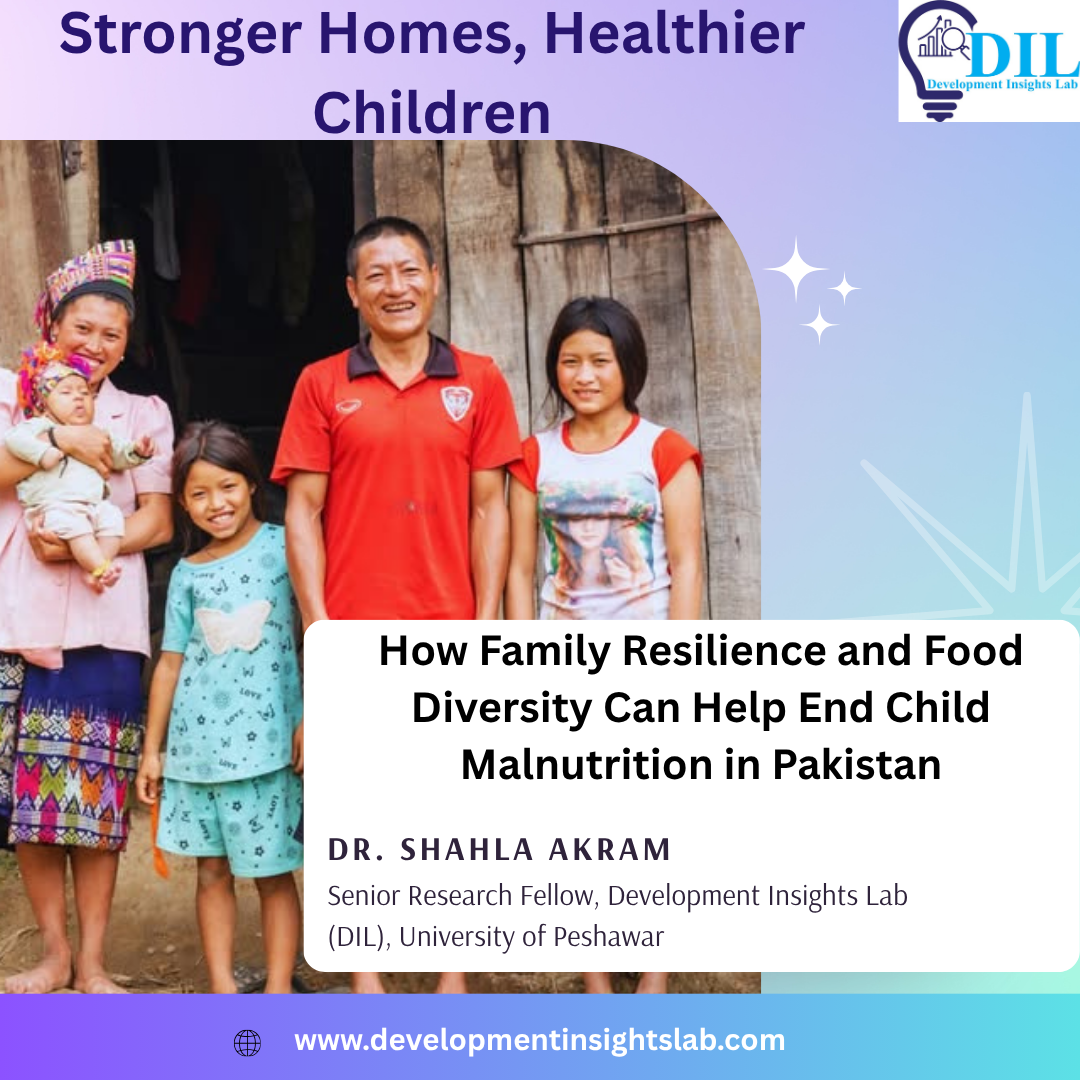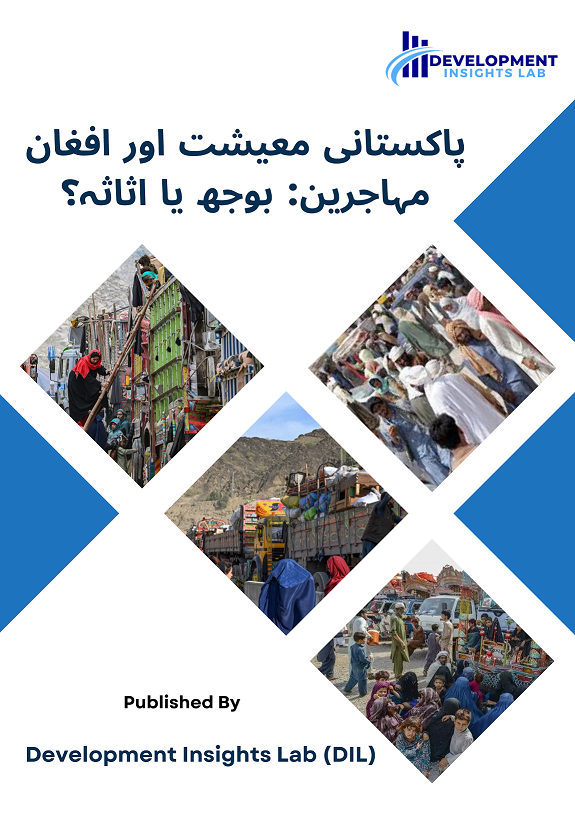How Family Resilience and Food Diversity Can Help End Child Malnutrition in Pakistan
By Dr. Shahla Akram, Senior Research Fellow, Development Insights Lab (DIL), University of Peshawar
🌾 Introduction
Child malnutrition remains one of Pakistan’s most persistent public health challenges. Millions of children under five continue to suffer from stunting, underweight, and wasting, leading to long-term effects on their growth, learning, and productivity.
A recent study co-authored by researchers from the Development Insights Lab (DIL), University of Peshawar, along with partner institutions in China and Saudi Arabia, sheds new light on what really helps children thrive: stronger, more resilient households and more diverse diets.
🏠 What Makes a Household “Resilient”?
Resilience means a family’s ability to cope with shocks and bounce back from crises — whether it’s job loss, illness, or rising food prices.
Resilient households typically have:
- Access to clean water, sanitation, electricity, and healthcare
- Some economic stability through jobs or assets
- Educated adults who make informed food and health decisions
- Support from social protection programs like cash transfers or health insurance
Families with these strengths are better equipped to feed their children nutritious food and shield them from the effects of poverty.
🍲 Why Dietary Diversity Matters
Children who eat a variety of foods — grains, fruits, vegetables, dairy, eggs, and meat — are more likely to grow strong and healthy.
The study used a key measure called Minimum Dietary Diversity (MDD), which looks at whether a child eats at least four or more food groups a day.
Those who did were significantly less likely to be stunted, underweight, or wasted.
In simple words:More food variety = better nutrition = healthier kids.
📊 What the Study Found
Using UNICEF’s Multiple Indicator Cluster Survey (MICS 2017–2020) and data from over 11,000 children aged 6–23 months, researchers uncovered some powerful patterns:
- Resilient households had far fewer malnourished children.
- Children with diverse diets were much less likely to be stunted or underweight.
- Rural and poorer areas — especially Sindh, KP, and Baluchistan — faced higher malnutrition risks.
- Punjab performed better, likely due to better education, health access, and infrastructure.
- Female children showed slightly lower rates of malnutrition than boys.
Regional Picture
| Province | Stunting | Underweight | Wasting | Low Diet Diversity |
| Punjab | 24% | 19% | 9% | 79.7% |
| Sindh | 46% | 39% | 21% | 83.4% |
| KP | 33% | 22% | 14% | 84.8% |
| Baluchistan | 50% | 37% | 19% | 81.2% |
The numbers show a clear pattern: children in poorer provinces are more vulnerable, highlighting the need for tailored provincial strategies rather than one-size-fits-all solutions.
What Needs to Be Done
To break the cycle of child malnutrition, the study recommends a dual approach:
- Build Resilient Families
- Expand social protection programs and livelihood opportunities.
- Improve access to clean water, electricity, and healthcare.
- Promote Dietary Diversity
- Run nutrition awareness campaigns, especially in rural areas.
- Encourage the use of local, affordable, and seasonal foods for balanced diets.
- Invest in Vulnerable Regions
- Focus special interventions in Sindh, KP, and Baluchistan, where malnutrition is highest.
- Promote Gender Equality in Nutrition
- Ensure that both boys and girls receive equal access to food and health services.
🧭 Why This Matters
When families are strong — socially, economically, and emotionally — children grow up healthier.
Resilience at the household level doesn’t just fight hunger; it builds hope, confidence, and long-term development potential.
This study reminds policymakers and practitioners that tackling child malnutrition is not just about feeding children — it’s about strengthening the families and systems that feed them.
🔗 Learn More
Visit https://developmentinsightslab.com for more research and policy insights from DIL.



